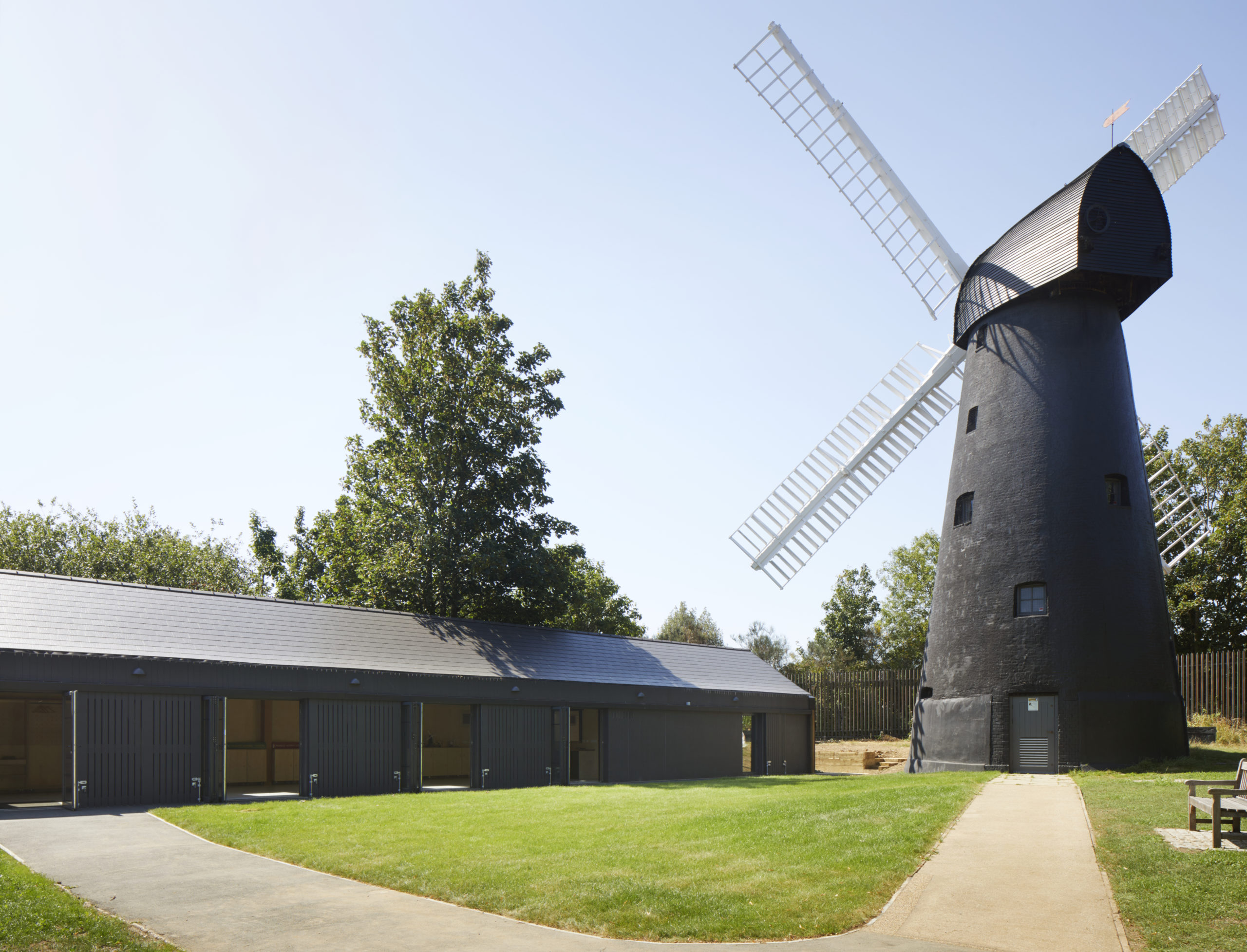London’s last surviving working mill gets an upgrade with a new community centre, built on a JCT Intermediate Contract.
The new community centre at Brixton Windmill has been a project many years in the planning for the Friends of Windmill Hill (FoWH), which was completed last year with funding from Lambeth Council. The charity is responsible for the preservation and maintenance of the Grade II listed windmill, the last remaining working flour mill in London. The brief for the new community centre was to provide a flexible building for a range of community activities, allow FoWH to continue their work in the preservation of this heritage site, and enable the mill to serve future generations.
There are two main functions that the new building supports. One is providing a resource for FoWH to be able to preserve and maintain the historic windmill as a functioning mill and education space. It does this by creating much needed space for learning workshops run by engaging local schools, supporting adult education initiatives, and housing a visitor centre and configurable exhibition areas. The venue can also be hired for events, such as birthdays and weddings which provides a revenue source.
The second main function is the centre’s role to support community engagement and social enterprise. The space can be used for a variety of community group activities, including an annual beer and bread festival. The centre can store the flour and grain milled by the windmill and increases milling activity by running baking workshops on-site and selling the traditionally milled flour to local bakeries, restaurants, and shops. During the Covid-19 pandemic, the flour has also been delivered to local food banks to provide further community support.
Externally, the building takes its cues from the existing windmill, and its one-storey structure references the original miller’s outbuildings, which gave way in the 1960s as the development of the Windmill Gardens park came in as a response to over-urbanisation. Modern materials and construction however brings the building up to date and facilitates its flexible use. Douglas Fir tapered columns are used to craft a contemporary dark-grey pitched roof which employs skylights to allow the internal space to be flooded with natural light. Dark weatherboard clads the exterior, and the structure is supported at each end by two gable walls built in a soot-washed Staffordshire Blue engineering brick to match the black painted windmill tower.
A simple and elegant exposed timber frame forms the interior. Alongside the pale grey under heated screed/resin flooring, ply-lined walls, and suspended pendant lights, it presents a neutral, warm palette that supports the centre’s various uses and functions. In addition to the skylights in the roof, full-height, bi-fold glazed doors open out to a deck terrace that overlooks the park. Sliding panels of vertical slats allow the light into the space and provide security when the building is unoccupied. The functional but stylish theme continues in the café where plywood joinery is a feature of the serving area. Other features include space for a pop-up shop with in-built display areas, and low-level units which can be used in a variety of ways: tables, storage, museum/shop display, or seating. The other building functions are arranged behind the main space, and include the kitchen, toilets, grain store, cycle parking and administration space.
The development of the Brixton Windmill Community Centre has provided a new lease of life to an important local landmark for the Brixton area. Although the mill has itself provided an important community service for many years, the new centre enables local residents, community, and education groups to reconnect to this historic and vital site in a fresh, engaging way. The use of the JCT Intermediate Building Contract (IC) enables contracting arrangements to be suitably set out where there are some complex provisions required and where a variety of trades, skills and disciplines are needed to complete the project. In the case of Brixton Windmill Community Centre, the IC form provides a widely regarded and well known contract to give all parties confidence to deliver a project with collaboration and community at its heart.
Project Data
Start: November 2018
Completion: August 2020
Gross internal floor area: 170m²
Cost: £750,000
Contract: JCT Intermediate Building Contract
Architect: Squire and Partners
Client: Lambeth Council Friends of Windmill Gardens (FoWG)
Contractor: Logan’s Construction
Structure: Hegre Tillett Steel
Oak frame: Carpenter Oak
Bespoke joinery: Modwood
Services: Hoare Lea
Cost consultant: Equals Consulting
Cultural ambassadors: Eley Kishimoto
Image: Jack Hobhouse

